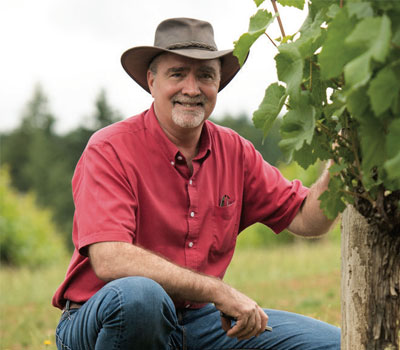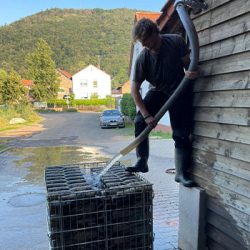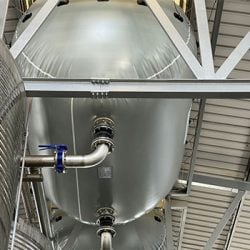That’s the question that spurred Michelle Bouffard, a Canadian sommelier and wine critic, to organize the Tasting Climate Change conference in Montreal, taking place while this issue is on press.
One of the presenters, Gregory Jones, an environmental scientist who runs the wine department at Linfield College in Oregon, has predicted that climate changes in the Pacific Northwest could open up areas previously unsuitable for Vitis vinifera—like, for instance, the islands of Puget Sound.
In a lead-up to the conference, Jones considered the shifting climate of his home state. Even the most conservative prediction over the next 50 years forecasts warming of at least one degree Celsius—enough, Jones says, to move much of Oregon’s Willamette Valley out of Region I on the Winkler Index (the coolest viable climate for pinot noir and chardonnay) and into a Region II climate, more accommodating to a range of varieties. So why, then, are the warmer southern AVAs of Oregon the fastest-developing winegrowing regions in the state? Why aren’t more people seeking the areas on the edges of Region I?
“Economics,” Jones replied when I called him at Linfield. “You know what southern Oregon’s biggest crop is? Pinot noir. Because of Willamette. Southern Oregon can ripen grapes at a higher tonnage, so they can sell at lower prices. If you have a high-end producer that wants a $15 pinot, you can’t do that with Willamette fruit.” The flow of grapes from the south is considerable, he says.“This time of year you see a lot of 18-wheelers headed north with fruit.”
But there’s more to it. It’s also about water.
“When it comes to developing new sites, water will be the limiting factor,” Jones explains, pointing out that, while outsiders tend to think of Oregon as damp and moist, almost all of that rain falls in winter. Most of the state’s vineyards are irrigated, especially in the south.


Plus, Jones adds, “Most of the work leading to the rights laws was done during what we call a pluvial period. It was rainy.” It was cooler as well. “Back in the late fifties and sixties, people in California told growers here they were crazy—it was too cold and wet, they’d never be able to ripen fruit—and I can confirm as a scientist looking back that they were crazy. By any measure—length of season, amount of rain, heat accumulation—all those factors were completely against them.”
Today, ripening isn’t a problem in nine out of ten vintages, Jones says, but heat stress has become more of a concern: When it gets too hot, the vine begins to shut down its metabolic processes. Right now, water tends to be our first line of defense to protect vines from heat, but that works only when there’s water to be had. “If summers become drier, then rootstocks become more important, as well as the scion-rootstock relationship,” says Jones. “We need to look at how we can utilize the plant systems better.” And then there’s the matter of an increased tendency for extreme weather events, like torrential rains. “The balance of good drainage and retention will be really important,” Jones adds.
In the end, triangulating between temperature, water availability and soils to discover new winegrowing regions may take more energy than learning to adapt in place. “Sometimes you’ll talk to a grower who’s been growing grapes for multiple decades and they’ll tell you nothing’s changed,” says Jones. “But look closer, and you’ll find better plant material, different vine management, cover crops, spacing, trellising; then, in the winery, better yeasts, temperature control… They are not doing anything the same compared to when they first started. Adaptation is part of the process.” That goes for those of us drinking the wines as well.
This story was featured in W&S December 2017.
is W&S’s editor at large and covers the wines of the Mediterranean and Central and Eastern Europe for the magazine.
This story appears in the print issue of December 2017.
Like what you read? Subscribe today.


















